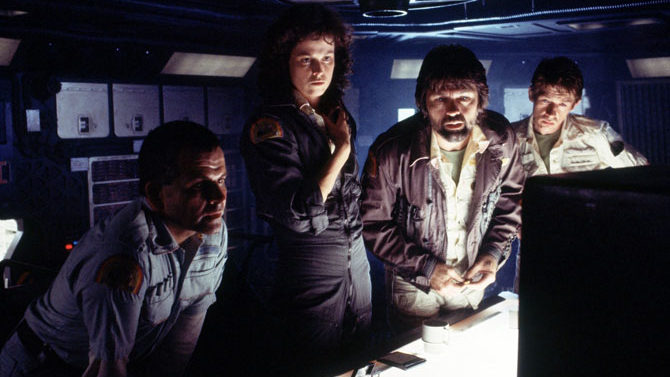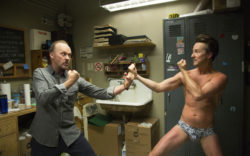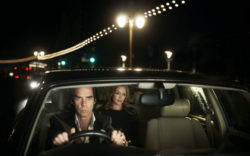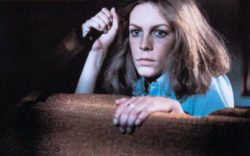ALIEN (R) While traveling back to Earth from a space excavation mission, the seven-member crew of the commercial spacecraft Nostromo are wakened from their hyper-sleep by a distress signal emanating from a nearby planet. The crew seeks out the origin of the signal, and one of their members is subsequently attacked by a creature that has latched on to his face. The injured crew member is brought onboard the Nostromo for medical attention, but the alien creature gets loose, grows larger and quickly preys upon the desperate crew.
Alfonso Cuarón’s visually spectacular Gravity is not the only worthwhile science fiction movie to see on the big screen at the moment. Ridley Scott’s 1979 breakout summer blockbuster, Alien, is also playing in town for a limited engagement, and it is also an essential theater experience. Although Scott’s movie is arguably indebted to the horror genre more than science fiction, its influence on subsequent movies of its ilk cannot be overstated. On a visual level, Alien is an impressive experience. The hulking spacecraft Nostromo, where the majority of the action is situated, feels like a real environment, far removed from the way spaceships had commonly been presented in countless other movies. Instead of an austere, antiseptic place, the interior of the Nostromo is cluttered, cramped and visibly battered. It’s a workplace for the seven-member crew of the ship—Ripley (Sigourney Weaver), Dallas (Tom Skerritt), Kane (John Hurt), Ash (Ian Holm), Lambert (Veronica Cartright), Brett (Harry Dean Stanton) and Parker (Yaphet Kotto)—and its lived-in, functional design is one of the most memorable things about the movie. Scott and his technical crew would further elaborate on this kind of stylish working class chic in his 1982 masterpiece Blade Runner, but Alien‘s grimy aesthetic was the place where Scott’s genius for visual dazzle was first allowed to flourish. To get an idea of how Scott would abandon/contrast this unique visual approach, watch the 2012 Alien prequel Prometheus, a movie that embraced a cleaner, retro-1960s sci-fi sheen.
Despite the excellent performances from the ensemble cast and the terrifying suspense sequences that Scott brilliantly employs throughout, the real star of Alien is that of production designer H.R. Giger, the Swiss surrealist artist whose startling nightmarish, biomechanical conjurings memorably permeate the movie. Giger’s work in Alien is fiendishly original and helps elevate the movie from its B-movie narrative origins. Thirty-four years after its initial release, Alien still packs a punch.
Like what you just read? Support Flagpole by making a donation today. Every dollar you give helps fund our ongoing mission to provide Athens with quality, independent journalism.










